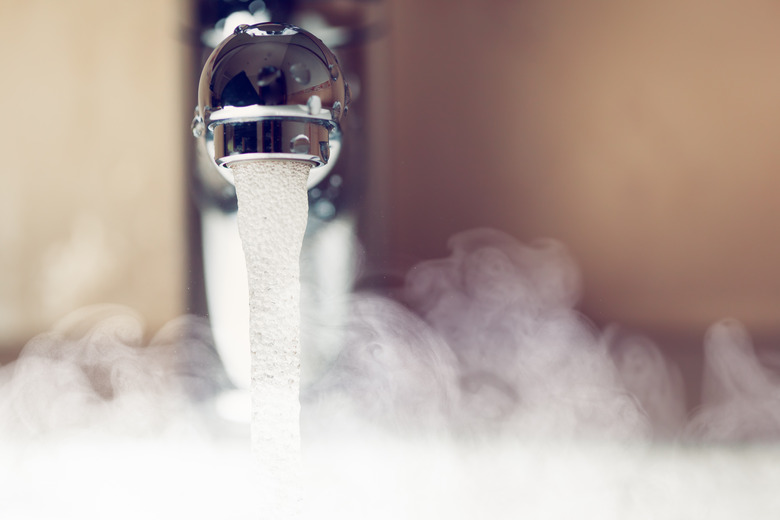Simple Evaporation Experiments
Evaporation happens when liquids turn into vapors. You can often see water evaporate on a hot day. In addition, there are fun and simple evaporation experiments you can do at home to learn more about the process. Read on and try the following evaporation science experiments.
Experiment With Covered and Uncovered Jars
Experiment With Covered and Uncovered Jars
Fill two identical mason jars with water. Leaving one of the jars uncovered, cover the other one with an improvised aluminum foil lid. Make the lid as secure as possible. Then, take the jars outside and place them both in an equally sunny spot. Draw a picture of the jars, noting the current water levels. Return to the experiment every day for the next week to observe and draw the current state of the water jars. You will observe that the water in the uncovered jar "disappears" more every day, while the water in the covered jar evaporates at a much slower rate because the evaporation process gets blocked by the aluminum foil.
Experiment With Sun and Shade
Experiment With Sun and Shade
After filling up two identical bowls with water, take them outside and locate a spot where direct sunlight and shadow stand side by side. Place one water bowl in the direct sunlight, and the other beside it in the shade. Observe both bowls and use pencil and paper to illustrate current water levels in each bowl. Return to the experiment every hour for the rest of the day, continuing to make observations and illustrations of the water levels. You will see that the water in the bowl placed in direct sunlight evaporates much more quickly than the shaded water due to the higher levels of heat, which increase molecular activity in the water, thus expediting evaporation.
Experiment With Wet Cloth
Experiment With Wet Cloth
Wet two identical pieces of cloth and wring the excess water out. Place one of the pieces of cloth in an airtight plastic bag. Place the other piece of cloth in an open tray. Position both items near a window with plenty of sunlight. Make predictions regarding which item will dry up first: the cloth in the sealed bag, or the one exposed to the air. Leave the items by the window overnight. When you return to the experiment the next day, you'll see that the exposed cloth dried up, while the one sealed inside the bag remains moist. This is because the water molecules in the sealed cloth can't escape into the air like the ones in the exposed cloth.
Experiment With Salt Water
Experiment With Salt Water
Add a decent amount of salt to a large glass of water. Then, pour the salty water onto a sheet of black construction paper placed inside a baking tray. If necessary, weigh down the paper with rocks or waterproof paper weights. Place the tray outside in a beam of direct sunlight. Predict what will happen to the water and salt. In a few hours, return to the tray to discover the outcome of the experiment. You will see that the water is gone, and that the salt remains on the black paper. The water disappeared due to the process of evaporation, but the salt stayed because it would require a lot more energy than provided by the sunlight to fully evaporate.
Cite This Article
MLA
Reynolds, Bill. "Simple Evaporation Experiments" sciencing.com, https://www.sciencing.com/simple-evaporation-experiments-15764/. 27 April 2018.
APA
Reynolds, Bill. (2018, April 27). Simple Evaporation Experiments. sciencing.com. Retrieved from https://www.sciencing.com/simple-evaporation-experiments-15764/
Chicago
Reynolds, Bill. Simple Evaporation Experiments last modified March 24, 2022. https://www.sciencing.com/simple-evaporation-experiments-15764/
